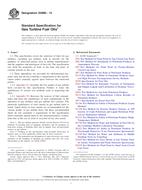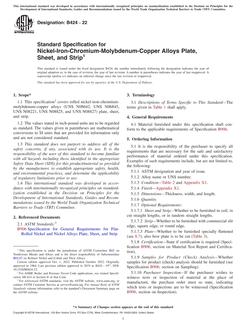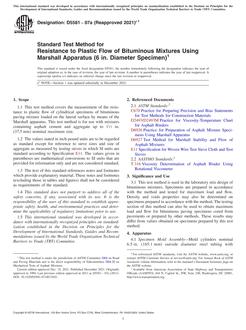1.1 This guide describes a procedure for obtaining relative wall thickness indications in ferromagnetic and non-ferromagnetic steels using the mutual inductance bridge method. The procedure is intended for use with instruments capable of inducing two substantially identical magnetic fields and noting the change in inductance resulting from differing amounts of steel. It is used to distinguish acceptable wall thickness conditions from those which could place tubular vessels or piping at risk of bursting under high temperature and pressure conditions.
1.2 This guide is intended to satisfy two general needs for users of industrial Mutual Inductance Bridge (MIB) equipment: (1) the need for a tutorial guide addressing the general principles of Mutual Inductance Bridges as they apply to industrial piping; and (2) the need for a consistent set of MIB performance parameter definitions, including how these performance parameters relate to MIB system specifications. Potential users and buyers, as well as experienced MIB examiners, will find this guide a useful source of information for determining the suitability of MIB for particular examination problems, for predicting MIB system performance in new situations, and for developing and prescribing new scan procedures.
1.3 This guide does not specify test objects and test procedures for comparing the relative performance of different MIB systems; nor does it treat electromagnetic examination techniques, such as the best selection of scan parameters, the preferred implementation of scan procedures, the analysis of image data to extract wall thickness information, or the establishment of accept/reject criteria for a new object.
1.4 Standard practices and methods are not within the purview of this guide. The reader is advised, however, that examination practices are generally part and application specific, and industrial MIB usage is new enough that in many instances a consensus has not yet emerged. The situation is complicated further by the fact that MIB system hardware and performance capabilities are still undergoing significant evolution and improvement. Consequently, an attempt to address generic examination procedures is eschewed in favor of providing a thorough treatment of the principles by which examination methods can be developed or existing ones revised.
1.5 The values stated in either SI units or inch-pound units are to be regarded separately as standard. The values stated in each system may not be exact equivalents; therefore, each system shall be used independently of the other. Combining values from the two systems may result in non-conformance with the standard.
1.6 This standard does not purport to address all of the safety concerns, if any, associated with its use. It is the responsibility of the user of this standard to establish appropriate safety and health practices and determine the applicability of regulatory requirements prior to use.
Product Details
- Published:
- 06/01/2010
- Number of Pages:
- 5
- File Size:
- 1 file , 240 KB
- Redline File Size:
- 2 files , 470 KB


